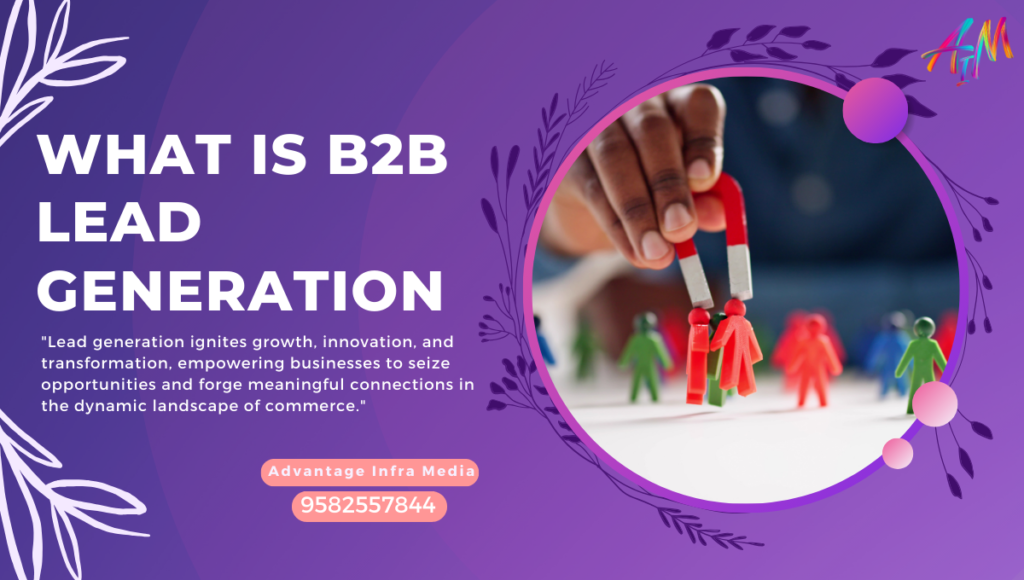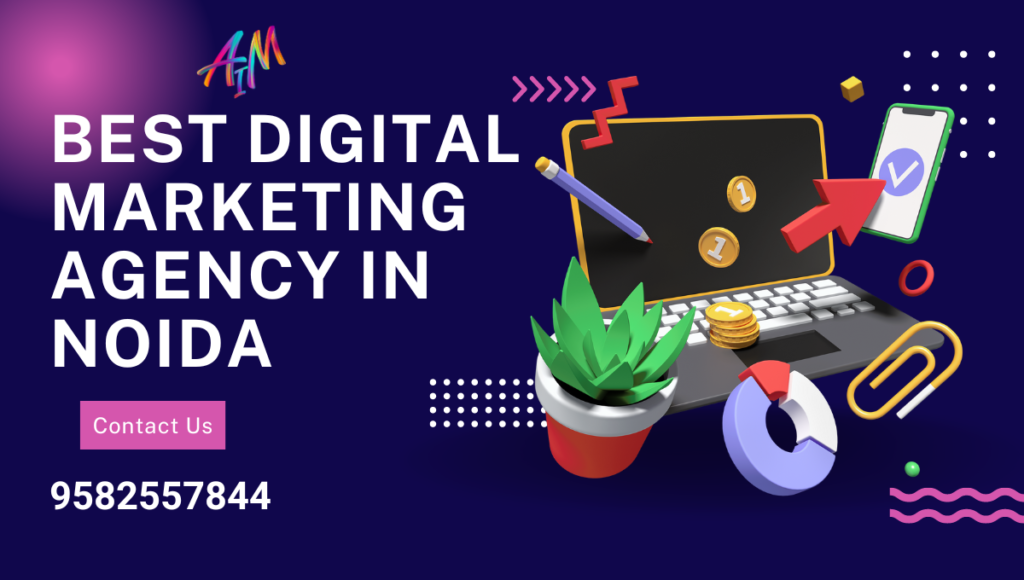Introduction
In the intricate ecosystem of business-to-business (B2B) commerce, lead generation reigns as a fundamental driver of growth and sustainability. In this comprehensive guide, we embark on a journey to unravel the essence of B2B lead generation, exploring its significance, strategies, and best practices.
Understanding B2B Lead Generation
At its core, B2B lead generation encompasses the process of identifying and nurturing potential customers for business products or services within the realm of B2B transactions. Unlike its counterpart, business-to-consumer (B2C) lead generation, which targets individual consumers, B2B focuses on fostering relationships with other businesses or organizations.
The Essence of B2B Lead Generation
B2B lead generation serves as the cornerstone of success in the competitive landscape of B2B commerce for several reasons:
- Revenue Generation: Leads serve as the lifeblood of revenue growth in B2B enterprises. By converting leads into customers, businesses can drive sales and bolster their bottom line.
- Market Expansion: Lead generation opens avenues to new markets and opportunities. By reaching out to potential clients, businesses can expand their reach and diversify their customer base.
- Relationship Building: Effective lead generation is not merely about making a sale; it’s about nurturing lasting relationships. By providing value and fostering trust, businesses can cultivate loyalty among their clients.
- Data Insights: Lead generation efforts offer valuable insights into customer preferences, pain points, and behavior. By analyzing this data, businesses can refine their marketing strategies and tailor their offerings to meet customer needs effectively.
The B2B Lead Generation Process
Effective B2B lead generation involves a systematic approach that spans various stages:
Identifying Target Audience
The first step in the lead generation journey is defining the target audience or ideal customer profile. This entails researching industries, demographics, and buyer personas to pinpoint potential prospects.
Creating Compelling Content
Content lies at the heart of B2B lead generation. Whether it’s informative blog posts, insightful whitepapers, compelling case studies, or engaging webinars, creating valuable and relevant content is essential for attracting and engaging potential leads.
Driving Traffic
Once the content is created, the next step is to drive traffic to it. This can be achieved through various channels such as search engine optimization (SEO), social media marketing, email campaigns, and paid advertising.
Capturing Leads
To capture leads effectively, businesses need to employ lead capture mechanisms such as landing pages, forms, and call-to-action buttons on their website. These tools allow visitors to express interest in the company’s offerings by providing their contact information.
Nurturing Leads
Not all leads are ready to make a purchase immediately. Lead nurturing involves building relationships with prospects over time through targeted communication and personalized content. This may include email drips, follow-up calls, and educational resources aimed at guiding leads through the buyer’s journey.
Qualifying Leads
As leads progress through the nurturing process, it’s essential to qualify them based on their level of interest and readiness to buy. This can be done through lead scoring mechanisms that assign points based on various criteria such as engagement level, demographic information, and behavior.
Converting Leads
The ultimate goal of lead generation is to convert leads into paying customers. This involves understanding the needs of prospects and positioning the company’s products or services as the ideal solution to their problems.
Measuring and Optimizing
Lead generation is an iterative process that requires continuous measurement and optimization. By analyzing key metrics such as conversion rates, lead quality, and return on investment (ROI), businesses can identify areas for improvement and refine their strategies accordingly.
Strategies for B2B Lead Generation
While the lead generation process may follow a general framework, the strategies and tactics employed can vary depending on the nature of the business and its target audience. Here are some effective strategies for B2B lead generation:
Content Marketing
Content marketing remains one of the most potent tools for B2B lead generation. By creating high-quality content that addresses the pain points and challenges of their target audience, businesses can attract inbound leads and establish thought leadership in their industry.
Search Engine Optimization (SEO)
Optimizing your website and content for search engines is essential for driving organic traffic and generating leads. By targeting relevant keywords and optimizing on-page elements, businesses can improve their visibility in search engine results pages (SERPs) and attract qualified leads.
Social Media Marketing
Social media platforms offer a wealth of opportunities for B2B lead generation. By leveraging platforms like LinkedIn, Twitter, and Facebook, businesses can connect with potential prospects, share valuable content, and engage in meaningful conversations that can lead to new business opportunities.
Email Marketing
Email marketing remains a powerful tool for nurturing leads and driving conversions in the B2B space. By sending personalized and targeted emails to leads at different stages of the buyer’s journey, businesses can keep their brand top-of-mind and encourage prospects to take the next step towards making a purchase.
Account-Based Marketing (ABM)
ABM is a strategic approach to B2B lead generation that focuses on targeting high-value accounts with personalized marketing campaigns. By aligning sales and marketing efforts and tailoring messaging to the specific needs of target accounts, businesses can increase their chances of success and drive higher ROI.
Paid Advertising
While organic methods are essential for long-term success, paid advertising can provide an immediate boost to B2B lead generation efforts. Whether it’s pay-per-click (PPC) advertising, display ads, or sponsored content, investing in paid channels can help businesses reach their target audience and generate leads quickly.
Networking and Events
Building relationships is key to B2B lead generation, and networking events provide an excellent opportunity to connect with potential prospects face-to-face. Whether it’s industry conferences, trade shows, or networking meetups, participating in events can help businesses establish credibility, generate leads, and foster valuable connections.
Best Practices for B2B Lead Generation
While there is no one-size-fits-all approach to B2B lead generation, certain best practices can increase the effectiveness of your efforts:
Understand Your Audience
Take the time to research and understand your target audience’s needs, pain points, and preferences. Tailor your messaging and content to resonate with their specific challenges and goals.
Focus on Quality Over Quantity
While it’s tempting to chase after as many leads as possible, focusing on quality leads that are more likely to convert will yield better results in the long run. Invest time and resources in nurturing and qualifying leads to ensure they are a good fit for your offerings.
Provide Value
Whether it’s through educational content, helpful resources, or personalized experiences, always strive to provide value to your leads. Position your company as a trusted advisor and thought leader in your industry.
Stay Consistent
B2B lead generation is a marathon, not a sprint. Stay consistent with your efforts and maintain a regular cadence of communication with your leads. Building relationships takes time, so be patient and persistent in your approach.
Track and Analyze Results
Monitor key metrics such as conversion rates, lead quality, and ROI to measure the effectiveness of your lead generation efforts. Use this data to identify areas for improvement and refine your strategies accordingly.
Conclusion
In the ever-evolving landscape of B2B commerce, lead generation remains a vital driver of growth and success. By understanding the essence of B2B lead generation, implementing effective strategies, and adhering to best practices, businesses can unlock new opportunities, nurture valuable relationships, and drive sustainable growth in the competitive marketplace.
This comprehensive guide aims to provide a thorough understanding of B2B , empowering businesses to navigate the complexities of the B2B landscape with confidence and clarity.




